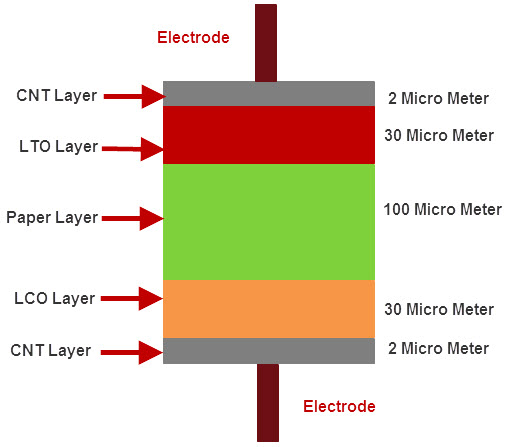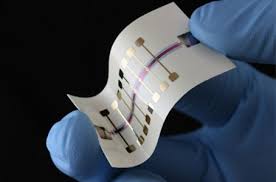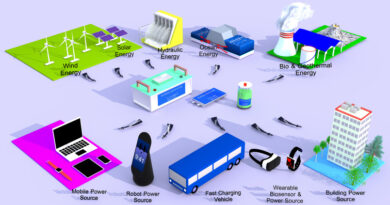E-waste Reduction With Paper Batteries: The World’s Best Inventions (2024)
E-waste Reduction With Paper Batteries
An enormous increase in electronic garbage, or “e-waste,” has resulted from the unrelenting expansion of electronic use, presenting a serious environmental threat. E-waste reduction with paper batteries, which are made up of abandoned electronic equipment, poses serious threats to human health and ecosystems since they contain dangerous elements including lead, mercury, and cadmium.

To tackle this e-waste reduction, creative solutions are required that utilise sustainable energy sources in addition to reducing e-waste. Paper batteries are a unique technology that combines energy storage capabilities with paper-based substrates. It is one solution that is gaining steam in the market.
Paper batteries are an environmentally beneficial option for power generation and storage, as opposed to traditional batteries that are made of hazardous chemicals. Paper batteries also present a viable option for lowering environmental pollution linked to conventional battery disposal techniques because of their biodegradability.
Follow our Digiknowledge.co.in page for the latest updates about bikes, cars, sports, lifestyle, and many more.
In order to reduce e-waste and pave the path for sustainable energy alternatives, this research investigates how paper batteries might be revolutionary. Paper batteries offer a highly attractive prospect to reduce the environmental effects of electrical consumption and promote a more sustainable future by combining materials research, engineering, and environmental conservation in an interdisciplinary manner.
What are paper batteries?
With the creation of a disposable paper battery that is activated by water, researchers at EMPA have achieved noteworthy progress in the field of sustainable energy. This cutting-edge battery technology, led by Gustav Nyström and his team, provides a viable way to power low-power, disposable gadgets for one usage at a time while reducing environmental impact. The battery is made up of one centimetre square cell at the very least. It is an efficient design that uses three inks that are carefully printed on a rectangle of paper.
Most importantly, salt is mixed into the paper strip to improve its conductivity and facilitate effective energy production. Specifically, the salt used is sodium chloride, also known as regular table salt. In order to guarantee water resistance and continued performance for medical diagnostic devices, one end of the paper strip is also carefully dipped in wax.
What are the uses of paper batteries?
Numerous applications are made possible by this innovative discovery, such as the powering of environmental sensors, medical diagnostic equipment, and smart labels for object tracking. This paper battery is a throwaway device that promises to transform the disposable electronics market while reducing its environmental impact. It does this by using eco-friendly materials and the power of water to create a sustainable energy storage solution.
How do paper batteries work?
In order to convert stored energy into electrical power, a variety of materials and chemical reactions are used in paper batteries. The general way they work is as follows, simplified:
Substrate: A paper or cellulose-based thin sheet is typically used as the basis of a paper battery. The integration of different components is facilitated by this substrate.
Electrodes: These are created by applying conductive materials, including metals like silver or zinc or carbon-based inks, to the paper substrate. The locations in the battery where electrical current enters and leaves are these electrodes.
Electrolyte: An electrolyte is a substance that is applied as a separate layer or is infused into the paper substrate. Typically, it is a gel-like solution.
The battery can produce power because the electrolyte makes it easier for ions to move between the electrodes.
Energy Storage: Depending on the situation, the paper battery may contain conventional battery chemicals like zinc-air or lithium-ion, or it may include materials like supercapacitors. When needed, these substances release and store energy.
Activation: Depending on how they are made, paper batteries can be triggered in a number of ways. For instance, introducing liquids, such as water, to certain paper batteries will activate them and start the chemical reactions required to produce energy.
Chemical Reactions: Chemical reactions in the electrolyte and at the electrodes take place when the battery is turned on. Electrical current is produced by these processes, which entail the movement of electrons between the electrodes.
Energy Production: Power is produced when electrons move from one electrode to the next via an external circuit. Connected electronic gadgets to the battery can be powered by this energy.
Paper batteries can be used for a variety of purposes, particularly in low-power or disposable electronics, since they are a lightweight, flexible, and eco-friendly substitute for conventional batteries. In attempts to lessen technological waste and promote sustainability, their attractiveness is aided by their simplicity and capacity to be integrated with eco-friendly materials.
What is the time limit for e-waste disposal?
E-waste does not biodegrade; instead, it is more likely to damage the environment and take 50–1 million years to disintegrate.
What are paper batteries used for?
Because of their low weight and low cost, their paper-like qualities and the integrated nanotube structure make them suitable for use in toys, cars, aeroplanes, and portable electronics. (such as model aircraft).
What are the disadvantages of using paper batteries?
These batteries have low shear strength, which makes them readily ripped. The techniques (such as arc discharge, CVD, ablation, and electrolysis) employed in the production of carbon nanotubes are costly and inefficient. Inhaling them can be dangerous for humans.
What is the difference between a lithium-ion battery and a paper battery?
Paper batteries with Li-ion technology are safer than traditional Li-ion batteries and are capable of efficient recharging. The paper battery made from CNTs is environmentally friendly, biodegradable, and reusable. Their operational temperature range is quite broad. Paper batteries have a high overall efficiency.





Wow, superb blog format! How lengthy have you been running a
blog for? you make blogging glance easy. The full look of
your web site is wonderful, let alone the content! You can see similar
here sklep internetowy
I’m glad to hear that you find the content helpful and enjoyable! If you have any specific topics you’re interested in or questions you’d like to explore further, feel free to ask